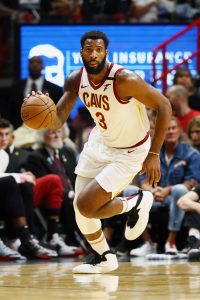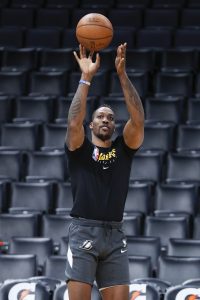Earlier this week, we asked you for your hypothetical 2019/20 NBA ballot, based on the possibility that the regular season is essentially over. Today, we’re shifting our focus to another one of the NBA’s major end-of-season awards: Rookie of the Year.
Entering the season, No. 1 pick Zion Williamson was viewed as the overwhelming favorite for the Rookie of the Year award. However, health issues delayed Williamson’s NBA regular-season debut until January 22, and the Pelicans forward ultimately only appeared in 19 games.
Williamson was as good as advertised in those games, averaging 23.6 PPG, 6.8 RPG, and 2.2 APG on 58.9% shooting in just under 30 MPG. However, it’s tough to put the former Duke star atop any Rookie of the Year ballot, considering he didn’t even reach the 20-game threshold. Joel Embiid, who appeared in 31 games in 2016/17, didn’t earn ROY honors either, and he wasn’t up against a competitor like Ja Morant, who looks like the overwhelming favorite to take home the award in 2020.
Morant, the No. 2 overall pick in last year’s draft, filled up the box score by recording 17.6 PPG, 6.9 APG, and 3.5 RPG on .491/.367/.770 shooting in 30.0 minutes per contest. He put up those numbers while starting 59 games for the Grizzlies and leading the overachieving squad to a No. 8 seed in the Western Conference.
Zach Harper of The Athletic writes that “it feels impossible” to give this year’s Rookie of the Year award to anyone besides Morant, while Dan Devine of The Ringer refers to the former Murray State standout as “the no-doubt-about-it pick” for the trophy. ESPN’s analysts agreed — all 70 straw poll respondents placed Morant atop their ballots.
Although Morant seems like a lock for the actual award, it’s still worth exploring how you’d fill out the rest of your three-man ballot.
Despite his small sample, Williamson earned 51 second-place votes from ESPN’s panel, and placed second on Harper’s list too. However, Devine left Zion off his ballot entirely, opting for Grizzlies forward Brandon Clarke and Raptors guard Terence Davis instead, pointing to a series of impressive advanced stats to make his case for the two less heralded rookies.
Heat guard Kendrick Nunn deserves consideration as well — he placed third on ESPN’s list and on Harper’s ballot. Warriors big man Eric Paschall and Knicks forward RJ Barrett earned honorable mentions from Harper and at least one second-place vote apiece from ESPN’s voters. Bulls guard Coby White, Hornets forward PJ Washington, Wizards forward Rui Hachimura, and Heat sharpshooter Tyler Herro were among the players receiving third-place votes from ESPN’s panel.
What do you think? Can you make a case for anyone besides Morant as this season’s Rookie of the Year? Were Williamson’s 19 games enough to earn him a spot on your ballot? Who would your top three picks be for the 2020 Rookie of the Year award?
Head to the comment section below to share your thoughts!
 He changes teams via trade. For instance, the Cavaliers would hold
He changes teams via trade. For instance, the Cavaliers would hold 